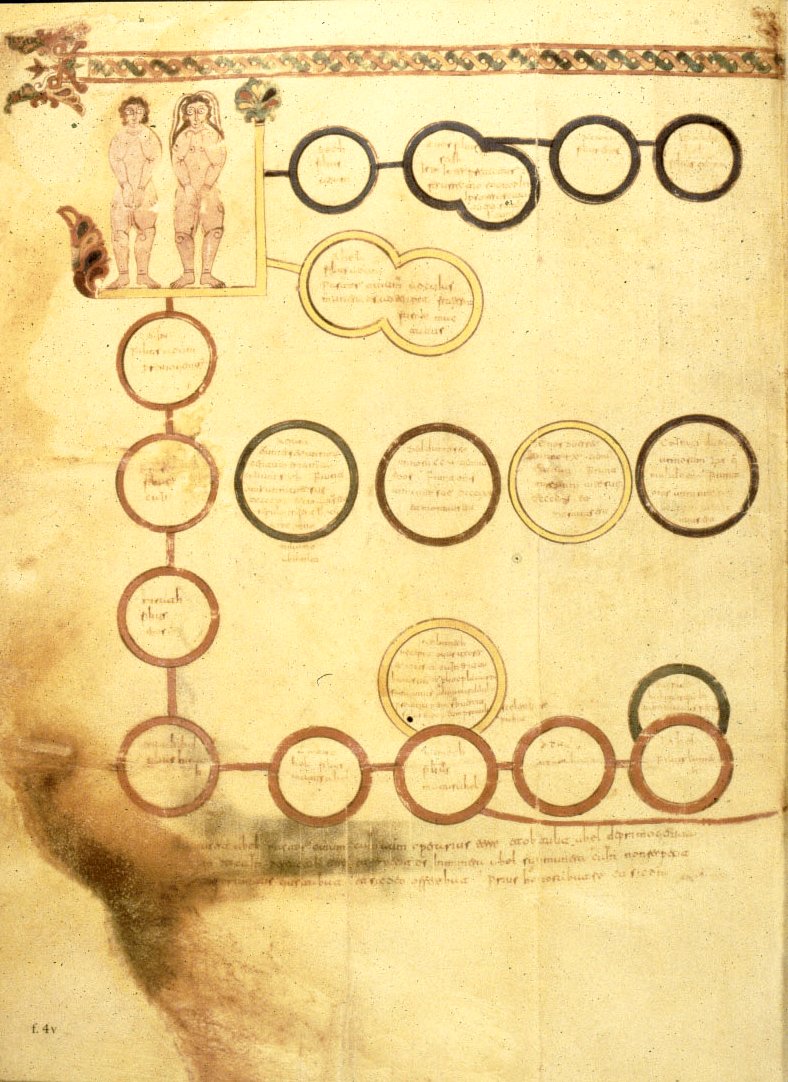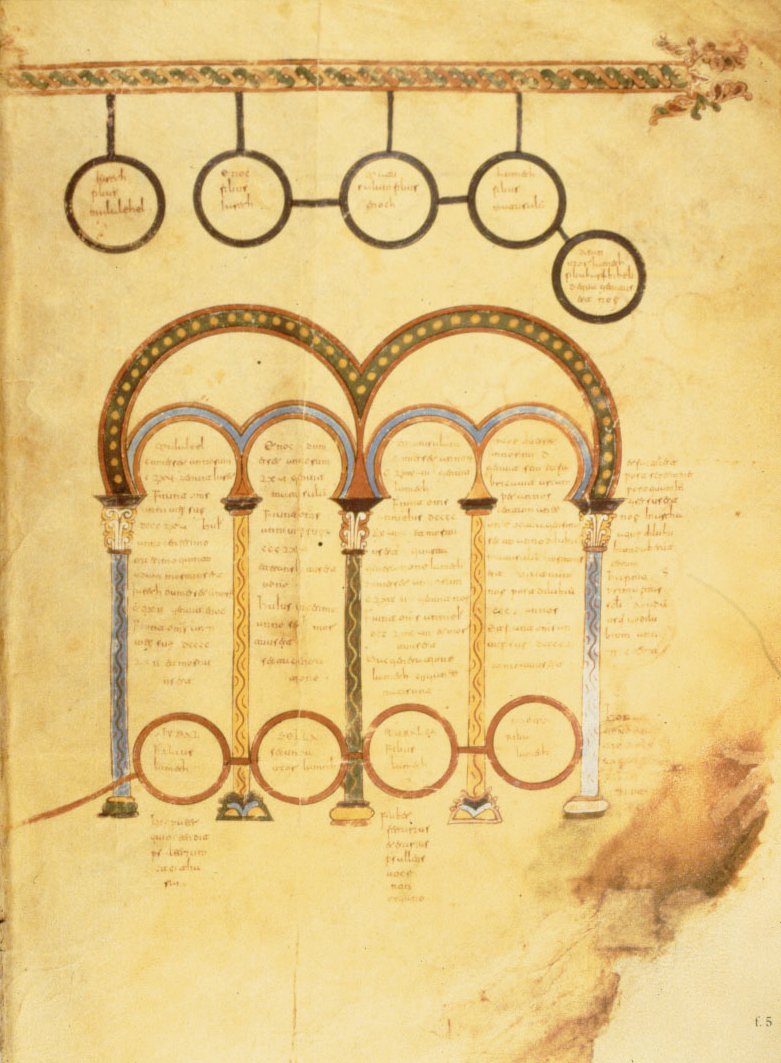

From Adam to Jesus:
Genealogies from Beatus of Liébana's
Commentaries on the Apocalypse
Beatus of Liebana, an eighth-century monk of the kingdom of Asturias, wrote a commentary on the apocalypse which was to become influential in the dissemination of a school of illuminated manuscripts: some 26 illuminated manuscripts survive (whole or in part), with dramatic depictions of scenes from Revelations, testifying to a flourishing manuscript tradition from the early ninth through twelfth centuries. Eleven of these twenty-six manuscripts or fragments include a series of genealogical tables illustrating the descent of Old Testament figures culminating in the Incarnation of Jesus. See John Williams, The Illustrated Beatus: a Corpus of the Illustrations of the Commentary on the Apocalypse, 5 vols. London: Harvey Miller, 1994-2003.
These are not well-pruned and consistently oriented such as would develop with the model of the Tree of Jesse in the twelfth century. Here, as in the earliest legal kinship diagrams (q.v.), a bushy kindred fills up page after page. These tables branch and turn at will to cover all the ramifying branches of Old Testament Jewry before culminating with Jesus. Roundels are connected, parent to child, by colored lines, but the diagrammatic choices are abstract and there is no consistent directional orientation to the generations—in any of the manuscripts. The eleven manuscripts which contain extant versions of this set of tables do not closely match each other in the layout of roundels on the page, suggesting that the illuminators had no particular organizing scheme in mind, and no experience making similar charts, when laying out these pages.
The sequence below is from the tenth-century copy which is in the J. Pierpont Morgan library in new York City. There is a published facsimile: A Spanish Apocalypse: the Morgan Beatus manuscript. Ed. John Williams, Barbara A. Shailor. New York: Braziller, 1991. The pictures here are academic-use photographic copies of the printed facsimile, and are insufficiently distinct to read the text.
For another set of these tables from a twelfth-century Beatus manuscript, the Beatus of Saint-Sever, go to its website and click on "Généalogie du Christ."
rev 02/27/2007